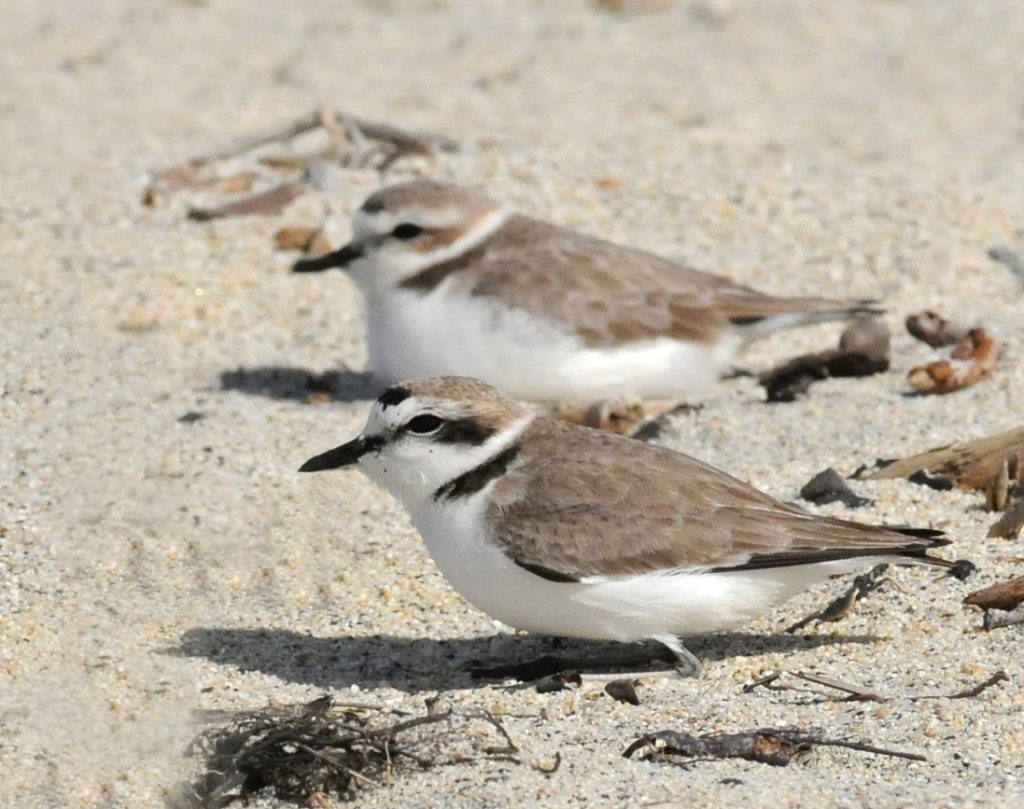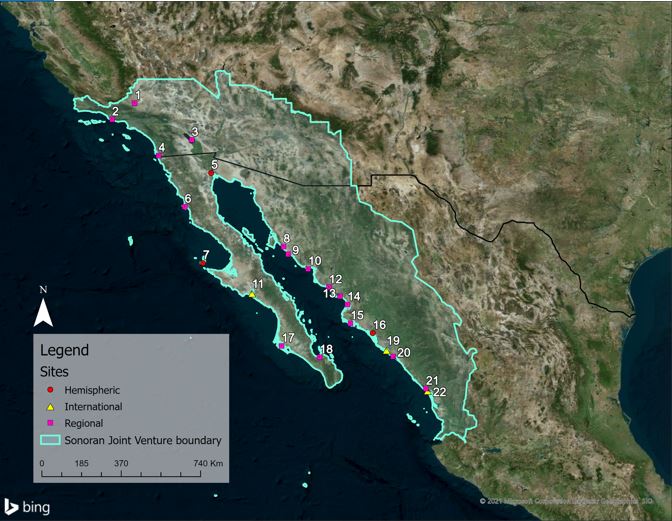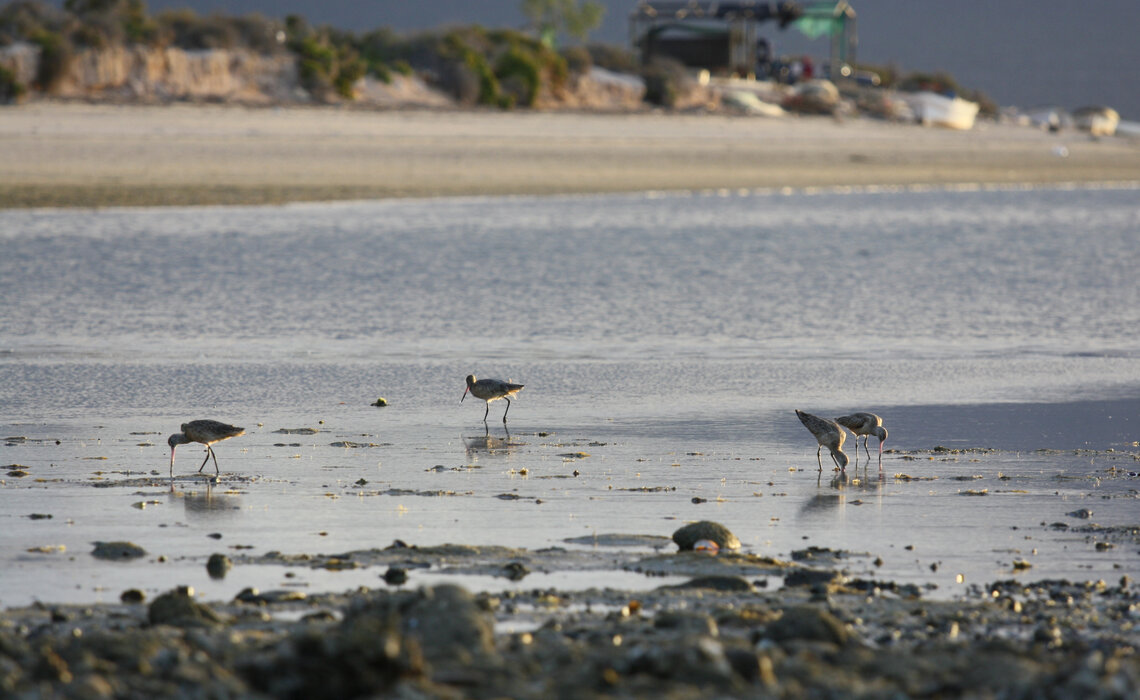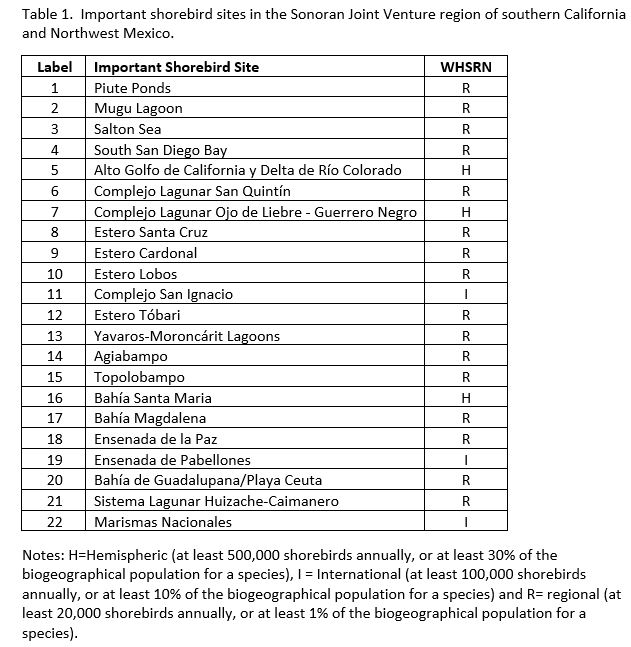By River Gates, Pacific Shorebird Conservation Initiative Coordinator, National Audubon Society

Shorebird conservation at a flyway-scale requires strategic collaboration among partners and stakeholders who share a vision. We launched the Pacific Shorebird Conservation Initiative (Initiative) to implement the actions delineated in the Pacific Americas Flyway Shorebird Conservation Strategy (Senner et al. 2016). While the Initiative works to maintain and restore shorebird populations across the entire Pacific Americas Flyway, our partners’ strategic efforts are implemented at local and regional scales. Habitat modifications, climate change, and invasive and problematic native species are the greatest regional threats to shorebirds.
The Sonoran Joint Venture’s Pacific Lowland region collectively hosts at least a million migratory shorebirds annually. Key habitats include freshwater wetlands, coastal dunes, mangroves, estuarine, brackish and saltwater wetlands, coastal lagoons, rocky islands, agricultural sites, as well as shrimp and salt farms. Threatened and endangered breeding shorebirds including American Oystercatcher, Snowy Plover, and Wilson’s Plover all find refuge here. The region is also critically important for migratory and wintering shorebirds including Whimbrel, Long-billed Curlew, Marbled Godwit, Black Turnstone, Red Knot, Surfbird, Sanderling, Dunlin, Semipalmated Sandpiper, Western Sandpiper, Short-billed Dowitcher and Willet.
There are twenty-two registered Western Hemisphere Shorebird Reserve Network (WHSRN) key shorebird conservation sites in the SJV region including 3 hemispheric (at least 500,000 shorebirds annually, or at least 30% of the biogeographical population for a species), 3 international (at least 100,000 shorebirds annually, or at least 10% of the biogeographical population for a species) and 20 regional (at least 20,000 shorebirds annually, or at least 1% of the biogeographical population for a species (see Figure 1. and Table 1). In 2021, WHSRN added 2 new sites, Lagunas Yavaros-Moroncárit and Bahía Lobos in the state of Sonora, which are both considered regionally important. Close SJV partner, Pronatura Noroeste, was key in collecting shorebird abundance data and building stakeholder agreements to support the WHSRN nomination.

The overall goal of the Initiative is to maintain and restore self-sustaining populations of shorebird species across the Flyway by enhancing resiliency to a changing climate and sustain ecosystems that support both people and shorebirds. In addition to local, on the ground efforts, we are tackling this regionally through thematic working groups. We launched the Shorebird Conservation and Shrimp Aquaculture Working Group in collaboration with the Executive Office of the WSHRN. Salvadora Morales and co-authors wrote an amazing assessment of the shrimp aquaculture’s conservation context and opportunities to work with industry to improve management practices to benefit shorebirds. We also developed a Shorebird Conservation and Shrimp Aquaculture in the Pacific Americas Flyway web map. The objective of the web map was to compile and synthesize spatial data for shrimp aquaculture and shorebirds for coastal Pacific Americas Flyway from northwestern Mexico to Central America. We created geospatial resources and tools to understand relative regional importance of shrimp-farms for shorebirds, to help prioritize conservation planning, and to assist in documenting outcomes of conservation actions.
To accomplish our shorebird conservation work at scale, it’s necessary to align with and leverage regional and international policy initiatives like the United Nations (UN) Sustainable Development Goals, UN Convention of Migratory Species, and the UN Convention on Biological Diversity. Alignment and support toward achieving the goals within these agreements can then be leveraged with large scale funding from public funding mechanisms. In 2021, we revised and translated the International Policy Initiatives and Multilateral Funding Mechanisms: Alignment with the Pacific Americas Shorebird Conservation Strategy report and webinar. This report looks at how the Pacific Shorebird Strategy’s action plans align with multilateral international environmental conventions, along with various public funding mechanisms, to understand the best strategy to combat the hemispheric challenges facing shorebirds in the Pacific Americas Flyway. On March 4, 2021, we co-hosted the International Environmental Conventions as Tools for Shorebird Conservation in the Americas webinar with WHSRN and BirdLife International to help our partners navigate this process. Recordings of the webinar can be viewed on WHSRN’s YouTube Channel in either English or Spanish.
To learn more, our website has great information on our geographic scope, threats analysis, focal species, important habitats, strategies, actions, and key shorebird conservation sites in the Pacific Americas Flyway. Likewise, we are pleased to announce that we have teamed up with the Atlantic Flyway Shorebird Initiative and the Midcontinent Shorebird Conservation Initiative to bring you the Shorebird Conservation Initiatives of the Americas website! The website shares not only our collective goals, threats, and hopes, but relevant shared resources that can be used across boundaries. Let’s find our common ground and learn from and with one another to protect shorebirds.
For more information, please contact River Gates.


